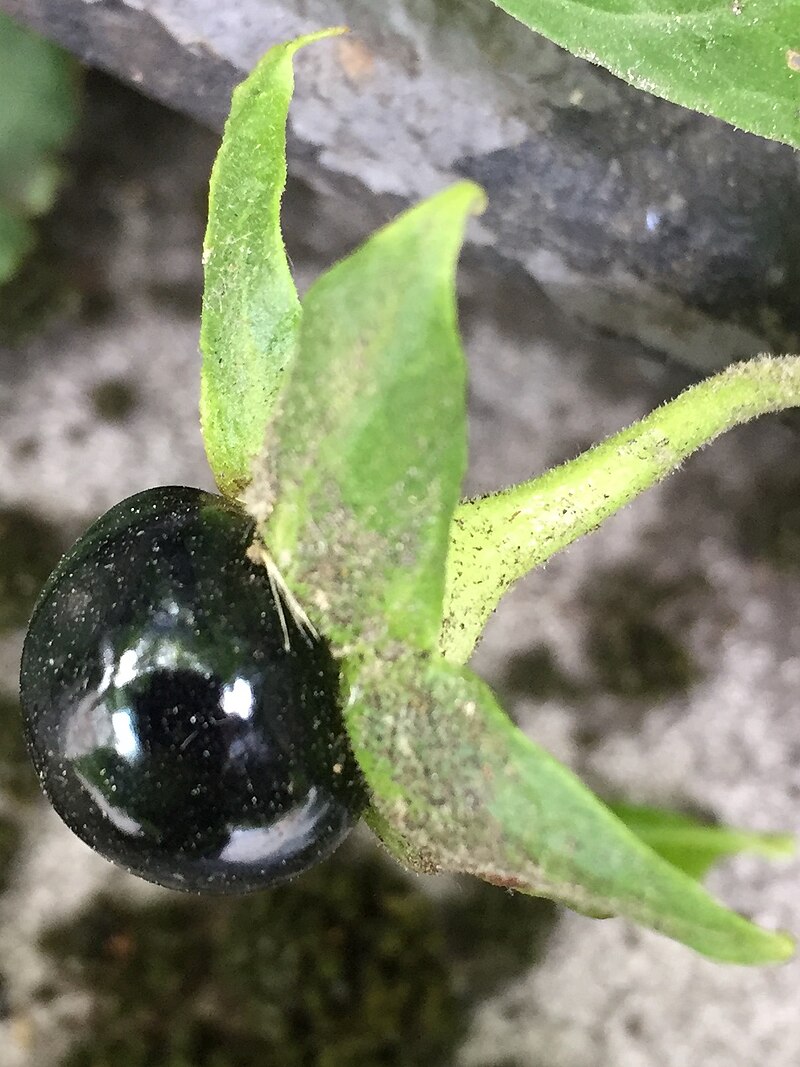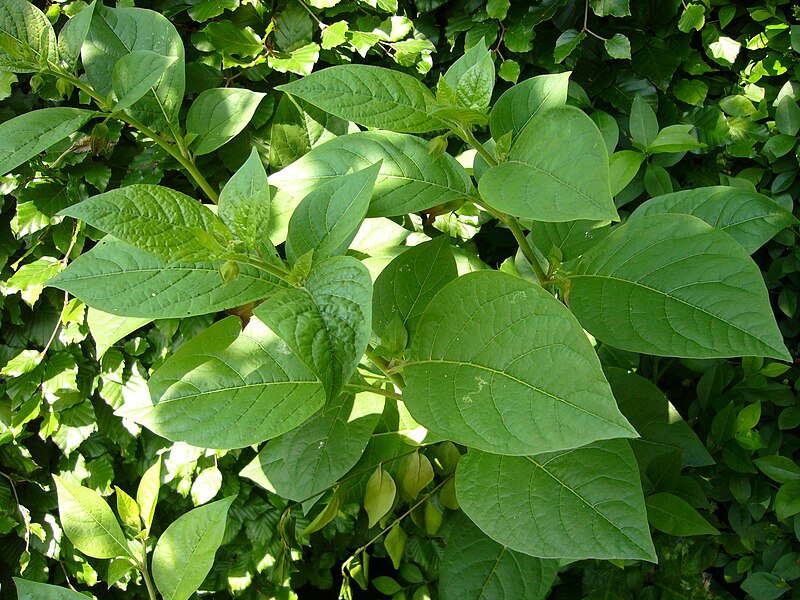 |
| Atropa belladonna |
 |
| fruit of Atropa belladonna L. (poisonous) |
 |
| Leaves of Atropa belladonna |
Synonyms:
- Belladonna herb, Belladonna leaf,
- Deadly night shade leaves,
- Banewort, Death’s herb, Dwale;
- Poison black cherry,
- Folia belladonnae,
- बेलाडोना, कंटालिका - Hindi
Biological Source:
Belladonna consists of dried leaves and flowering tops of Atropa belladonna Linn. (European Belladonna).
Family - Solanaceae.
It contains about 0.35% of total alkaloids calculated as hyoscyamine.
Geographical Source:
Belladonna is cultivated in United States, Canada, UK, Germany and India. Also in England and other Europian country.Morphology/Macroscopics Characters:
- Colour:
- Leaves: Green to brownish-green
- Flowers: Purple to yellowish-brown
- Fruits: Green to brown
- Odour: Slight and characteristic
- Taste: Bitter and acrid
- Size:
- Leaves: 5 to 25 cm long and 2.5 to 12 cm wide
- Flower: Corolla 2.5 cm long and 1.5 cm wide
- Fruits: About 10 cm in diameter.
- Shape:
- Leaves: Ovate, lanceolate to broadly ovate, with acuminate apex, decurrent lamina, entire margin, petiolate, brittle and transversely broken.
- Flower: Campanulate, 5, small reflexed lobes of corolla.
- Fruit: Berries, sub-globular in shape with numerous flat seeds.
Microscopy:
A transverse section of the leaf of A. belladonna has a bifacial structure. The epidermal cells have-wavy walls and a striated cuticle. Anisocytic type and some of the anomocytic type stomata arc present on both surfaces but are most common on the lower. Hairs are most numerous on young leaves, uni-seriate, two- to four-celled clothing hairs; or with a uni-cellular glandular head. Some hair has a short: pedicel and a multicellular glandular head. Certain of the cells of the spongy mesophyll are filled with micro-sphenoidal (sandy) crystals of calcium oxalate. The midrib is convex above and shows the usual bicollateral vascular bundle. A zone of collenchyma is present in epidermis near midrib.
Chemical Constituents:
Belladonna contains 0.3–1.0% total alkaloids, the prominent base is l-hyoscyamine and other components are atropine, apoatropine, as choline, belladonnine, cuscohygrine, chrysa-tropic acid, volatile bases, such as atroscine, leucatropic acid; phytosterol, N-methylpyrroline, homatropine, hyoscyamine N-oxide, rutin, kaempferol-3-rhamnogalactoside and 7-glu-coside, quercetin-7-glucoside, scopoletin, calcium oxalate, 14% acid soluble ash and 4% acid-insoluble ash. Addition of ammonia to the alcoholic solution of scopoletin shows blue florescence. This test is useful to detect Belladonna poisoning. Atropine is formed by racemization during the extraction process.
Uses:
- The drug is used as adjunctive therapy in the treatment of peptic ulcer; functional digestive disorders, including spastic, mucous and ulcerative colitis; diarrhoea, diverticulitis and pancreatitis.
- Due to anticholinergic property, it is used to control excess motor activity of the gastrointestinal tract and spasm of the urinary tract.
- Belladonna is anticholinergic, narcotic, sedative, diuretic mydriatic and used as anodyne and to check secretion. Other uses are similar to Hyoscyamus.
- It relieves spasm of gut or respiratory tract.
- Consumption of Belladonna checks excessive perspiration of patients suffering from tuberculosis. Belladonna acts as a parasympathetic depressant.



Post a Comment
0 Comments